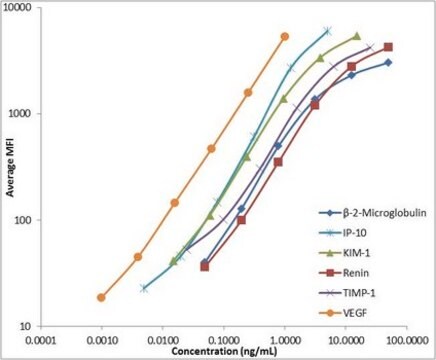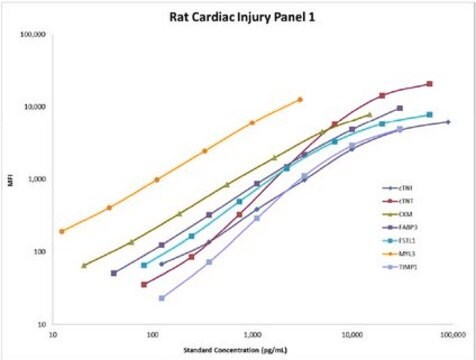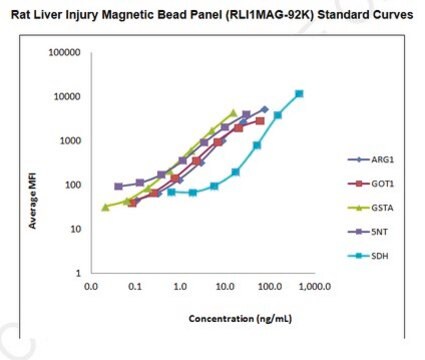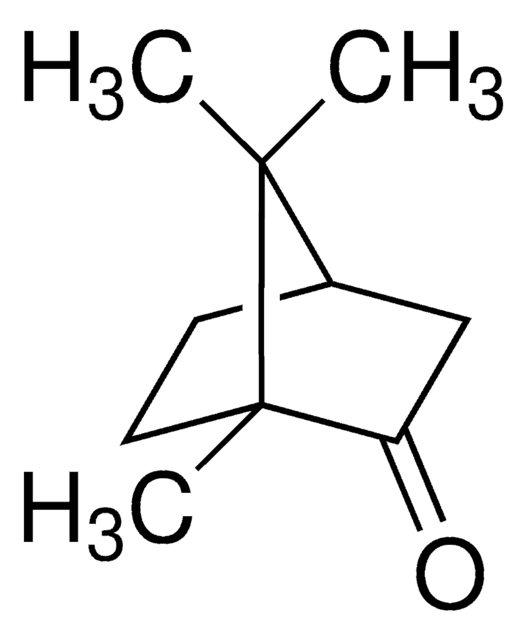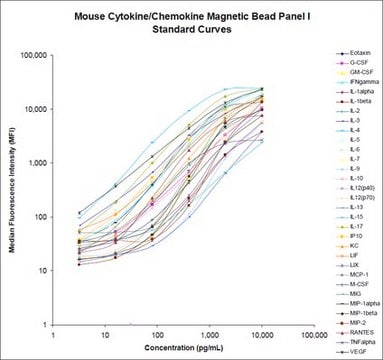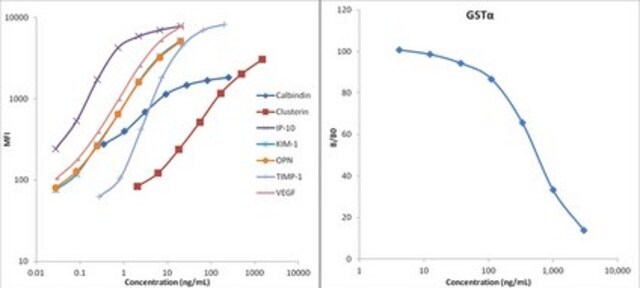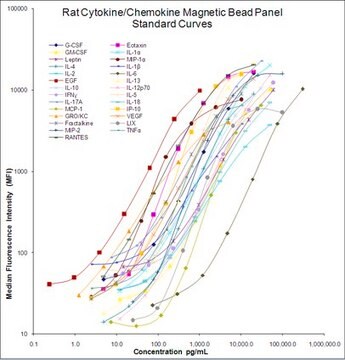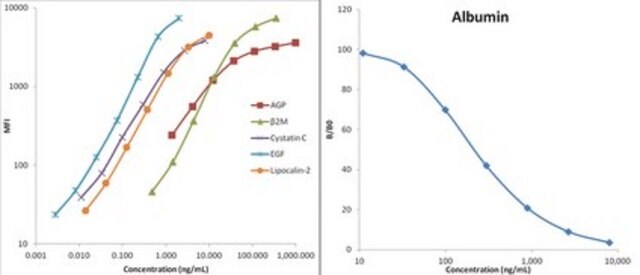MKI2MAG-94K
MILLIPLEX® Mouse Kidney Injury Magnetic Bead Panel 2 - Toxicity Multiplex Assay
The analytes available for this multiplex kit are: Clusterin, Cystatin C, EGF, Lipocalin-2/NGAL, Osteopontin (OPN) (for urine samples) or Clusterin, Cystatin C, Lipocalin-2/NGAL, Osteopontin (OPN) (for serum/plasma samples).
About This Item
Productos recomendados
Nivel de calidad
reactividad de especies
mouse
fabricante / nombre comercial
Milliplex®
assay range
accuracy: 90-99%
sensitivity: 0.005-0.190 ng/mL
(MinDC+2SD)
standard curve range: 0.005-5 ng/mL
(Lipocalin-2/NGAL)
standard curve range: 0.01-10 ng/mL
(Osteopontin (OPN))
standard curve range: 0.04-40 ng/mL
(EGF)
standard curve range: 0.05-50 ng/mL
(Cystatin C)
standard curve range: 0.2-250 ng/mL
(Clusterin)
técnicas
multiplexing: suitable
método de detección
fluorometric (Luminex xMAP)
Condiciones de envío
wet ice
Descripción general
The MILLIPLEX® Mouse Kidney Injury Bead Panel 2 contains all the components necessary to measure the following five biomarkers in any combination using Luminex® xMAP® technology: Clusterin, Cystatin C, EGF, Lipocalin-2/NGAL, Osteopontin (OPN). The kit uses a 96-well format, contains a lyophilized standard cocktail, two quality controls and can measure up to 38 urine samples in duplicate.
Panel Type: Toxicity
Especificidad
Aplicación
- Analytes: Clusterin, Cystatin C, EGF, Lipocalin-2/NGAL, Osteopontin (OPN)
- Recommended Sample type: urine
- Recommended Sample dilution: 1:1,000
- Assay Run Time: overnight
- Research Category: Toxicity
Características y beneficios
Envase
Almacenamiento y estabilidad
Otras notas
Información legal
Cláusula de descargo de responsabilidad
Palabra de señalización
Danger
Frases de peligro
Consejos de prudencia
Clasificaciones de peligro
Acute Tox. 3 Dermal - Acute Tox. 4 Inhalation - Acute Tox. 4 Oral - Aquatic Chronic 2 - Eye Dam. 1 - Skin Sens. 1 - STOT RE 2
Órganos de actuación
Respiratory Tract
Código de clase de almacenamiento
6.1C - Combustible acute toxic Cat.3 / toxic compounds or compounds which causing chronic effects
Certificados de análisis (COA)
Busque Certificados de análisis (COA) introduciendo el número de lote del producto. Los números de lote se encuentran en la etiqueta del producto después de las palabras «Lot» o «Batch»
¿Ya tiene este producto?
Encuentre la documentación para los productos que ha comprado recientemente en la Biblioteca de documentos.
Contenido relacionado
Multiplex toxicity assays enable researchers to simultaneously measure multiple toxicity biomarkers of various organs to gain a better understanding of toxicity. Explore how MILLIPLEX® multiplex toxicity assays are advancing research on liver injury, kidney toxicity, genotoxicity, and more.
Nuestro equipo de científicos tiene experiencia en todas las áreas de investigación: Ciencias de la vida, Ciencia de los materiales, Síntesis química, Cromatografía, Analítica y muchas otras.
Póngase en contacto con el Servicio técnico